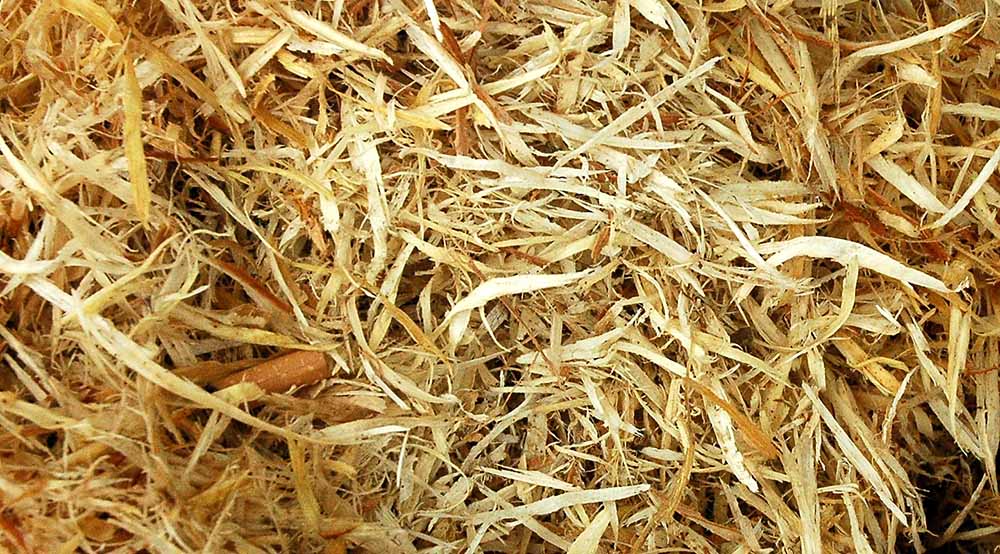Analysis of Sawmill Residues

Background
The residues from the sawmill industry are a large potential biomass resource. For example, in 2006 approximately 2.2 million cubic metres of timber was used in Irish sawmills and this was said to have resulted in the production of 1.1 million cubic metres of sawmill residues. These residues can be classified as bark, woodchips, or sawdust and have current uses in panelboard mills and for the generation of process heat and power. However, it has been estimated that the remaining quantities of residues could still be a significant resource for biorefining.Analysis of Sawmill Residues at Celignis
Celignis Analytical can determine the following properties of Sawmill Residues samples:
Sugars (Monosaccharides)
Sugar Alcohols and Uronic Acids
Lignin and Extractives
- Lignin (Klason)
- Lignin (Klason - Protein Corrected)
- Lignin (Acid Soluble)
- Acid Insoluble Residue
- Extractives (Ethanol-Soluble)
- Extractives (Water-Soluble)
- Extractives (Exhaustive - Water then Ethanol)
- Lignin S/G Ratio
- Extractives (Water-Insoluble, Ethanol Soluble)
- Protein Content of Acid Insoluble Residue
- Carbon Content of Acid Insoluble Residue
- Hydrogen Content of Acid Insoluble Residue
- Nitrogen Content of Acid Insoluble Residue
- Sulphur Content of Acid Insoluble Residue
Amino
Acids
Thermal Properties
- Moisture
- Ash
- Ash (Acid Insoluble)
- Carbon
- Hydrogen
- Nitrogen
- Sulphur
- Oxygen
- Volatile Matter
- Fixed Carbon
- Gross Calorific Value
- Net Calorific Value
- Chlorine
- Ash Shrinkage Starting Temperature (Oxidising)
- Ash Deformation Temperature (Oxidising)
- Ash Hemisphere Temperature (Oxidising)
- Ash Flow Temperature (Oxidising)
- Ash Shrinkage Starting Temperature (Reducing)
- Ash Deformation Temperature (Reducing)
- Ash Hemisphere Temperature (Reducing)
- Ash Flow Temperature (Reducing)
- Thernogram - Under Nitrogen
- Thermogram - Under Air
Major and Minor Elements
Cellulose Content of Sawmill Residues
The cellulose content of the residues will depend on what tree fractions they contain, and in what mass proportions. Sawdust will have a higher cellulose content than bark, for example.Click here to see the Celignis Analysis Packages that determine cellulose content.
Hemicellulose Content of Sawmill Residues
The hemicellulose content of the residues will depend on what tree fractions they contain, and in what mass proportions.Click here to see the Celignis Analysis Packages that determine hemicellulose content.
Lignin Content of Sawmill Residues
The lignin content of the residues will depend on what tree fractions they contain, and in what mass proportions. Bark, will have a higher lignin content than sawdust and wood chips, for example.Click here to see the Celignis Analysis Packages that determine lignin content.
Starch Content of Sawmill Residues
The starch content of sawmill residues will depend on the type of wood being processed and the nature of the residues. For example, bark will have a much higher starch content than sawdust.Click here to see the Celignis Analysis Packages that determine starch content.
Uronic Acid Content of Sawmill Residues
The uronic acid contents and compositions of the residues will depend on what tree types and fractions they contain, and in what mass proportions.Click here to read more about uronic acids and to see the Celignis Analysis Packages that determine uronic acid content.
Enzymatic Hydrolysis of Sawmill Residues
We can undertake tests involving the enzymatic hydrolysis of Sawmill Residues. In these experiments we can either use a commercial enzyme mix or you can supply your own enzymes.We also offer analysis packages that compare the enzymatic hydrolysis of a pre-treated sample with that of the native original material.
Click here to read more about enzymatic hydrolysis and to see the various analysis packages that we offer.
Ash Content of Sawmill Residues
The ash content of the residues will depend on what tree fractions they contain, and in what mass proportions.Click here to see the Celignis Analysis Packages that determine ash content.
Heating (Calorific) Value of Sawmill Residues
Sawmill residues can have a good moisture content and are often used within the mill for the generation of process heat/energy requirements.Click here to see the Celignis Analysis Packages that determine heating value.
Bulk Density of Sawmill Residues
At Celignis we can determine the bulk density of biomass samples, including Sawmill Residues, according to ISO standard 17828 (2015). This method requires the biomass to be in an appropriate form (chips or powder) for density determination.Click here to see the Celignis Analysis Packages that determine bulk density.
Basic Density of Sawmill Residues
At Celignis we can determine the basic density of some suitable biomass samples. The method requires the biomass to be in an appropriate form (chips) for density determination.Click here to see the Celignis Analysis Packages that determine basic density.
| Previous Feedstock | Next Feedstock |
Go Back to List of Feedstocks.
Energy
Crops
Agricultural Residues and Wastes
Industrial Residues and Wastes
Municipal
Wastes
Biorefinery
Products






